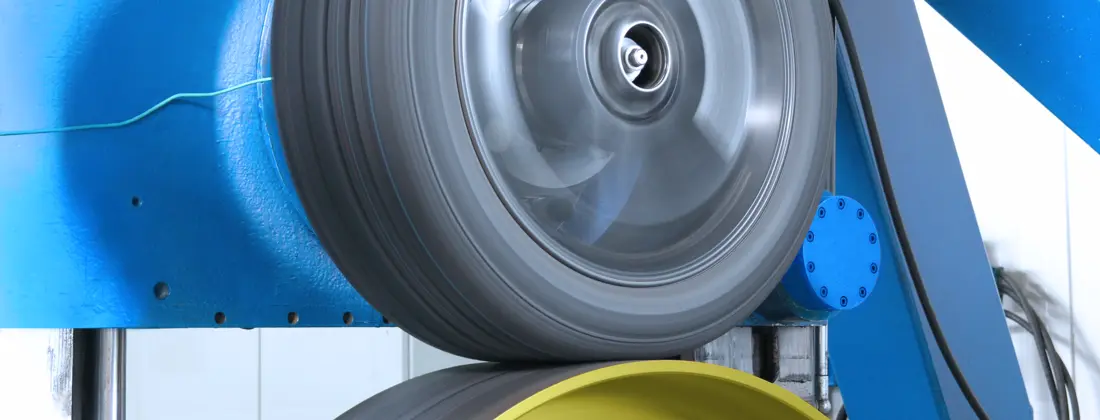ISO 23672 Tyre Rolling Resistance Measurement Test
The ISO 23672 tyre rolling resistance measurement test is a critical procedure that evaluates the energy loss during the rolling of tyres. This test is essential for automotive manufacturers and tyre producers as it helps in determining the fuel efficiency, safety, and performance of tyres. The standard provides a method to measure the rolling resistance coefficient (Crr) which directly impacts the fuel consumption and driving experience.
The procedure involves placing a tyre on a rotating drum with controlled parameters such as speed, temperature, inflation pressure, and load. These conditions are set in accordance with ISO 23672 requirements to ensure accurate and consistent results. The rolling resistance is calculated by measuring the force required to overcome the friction between the tyre and the surface of the drum.
Understanding rolling resistance is crucial for automotive manufacturers as it influences several aspects including fuel economy, emissions, and tyre durability. A lower Crr indicates better fuel efficiency and reduced CO2 emissions, which are key factors in meeting environmental regulations and improving overall sustainability efforts. Additionally, this test helps in optimizing the design of tyres to ensure they meet safety standards.
The ISO 23672 test is performed using specialized equipment such as a rolling resistance tester with a rotating drum that simulates real-world driving conditions. The apparatus must be calibrated regularly to maintain accuracy and reliability. The specimens used in this test are standardised tyres of specific dimensions, ensuring consistent results across different manufacturers.
The acceptance criteria for the ISO 23672 test include adherence to specified values of rolling resistance coefficient (Crr) as per the standard. Variations outside these limits may indicate issues with tyre construction or material properties. Compliance with this standard ensures that tyres meet strict international regulations and contribute positively to environmental sustainability.
| Parameter | Description | Acceptance Criteria |
|---|---|---|
| Rolling Speed (km/h) | The speed at which the tyre rolls on the drum. | Ranges from 8 km/h to 120 km/h as specified in ISO 23672. |
| Load (kg) | The weight applied to simulate real-world driving conditions. | Loaded according to the tyre's load rating, typically between 100 kg and 450 kg. |
| Inflation Pressure (kPa) | The air pressure inside the tyre before testing. | Maintained within ±2% of the recommended value per ISO 23672 guidelines. |
Eurolab Advantages
- State-of-the-art equipment for precise measurements and consistent results.
- Experienced technicians with in-depth knowledge of ISO standards.
- Dedicated laboratories ensuring a controlled environment for testing.
- Comprehensive support services including consultancy, training, and certification.
- Fast turnaround times without compromising on quality.
Environmental and Sustainability Contributions
The reduction in tyre rolling resistance significantly contributes to environmental sustainability by lowering fuel consumption, reducing CO2 emissions, and improving air quality. By adhering to the ISO 23672 standard, automotive manufacturers can produce tyres that contribute positively to global efforts towards a greener future.
- Lower carbon footprint due to improved fuel efficiency.
- Sustained resource management through efficient tyre design and production processes.
- Promotion of sustainable practices in the automotive industry by setting clear performance benchmarks.
Use Cases and Application Examples
The ISO 23672 tyre rolling resistance measurement test is widely used across various sectors including automobile manufacturing, tyre production, and fleet management. It helps manufacturers in optimizing their product lines to meet stringent emission standards while maintaining high performance levels.
| Sector | Application |
|---|---|
| Automotive Manufacturing | Evaluation of new tyre designs for better fuel efficiency. |
| Tyre Production | Quality control during manufacturing processes to ensure compliance with ISO standards. |
| Fleet Management | Economic analysis of tyre performance to reduce operational costs. |





